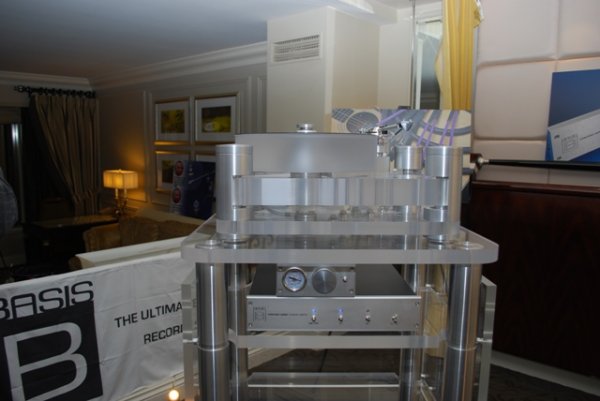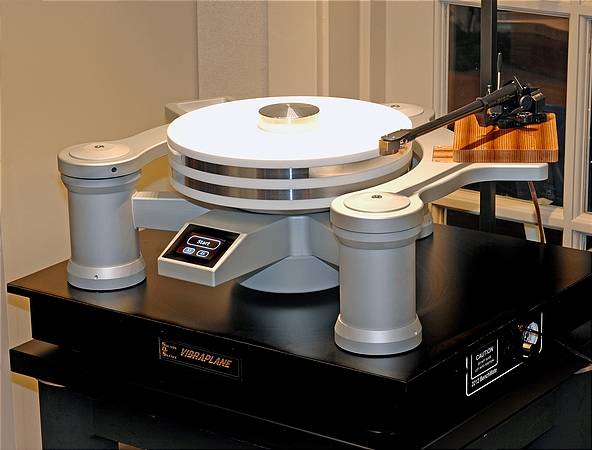Top ten most important turntables
- Thread starter Gregadd
- Start date
You are using an out of date browser. It may not display this or other websites correctly.
You should upgrade or use an alternative browser.
You should upgrade or use an alternative browser.
In the darkest days of vinyl, one TT did most to keep pressing plants open. It might even have been the best selling single model of turntable of all time. It would have been nice to have seen it on the list since it finally got discontinued after 3 decades. My vote goes to the Technics SL-1200 Mk2. I also would have voted for the TNT over the Scout.
I also would have voted for the TNT over the Scout.
No you wouldn't if you heard them side-by-side
the dual CS5000 it played 78- I was at someone house and thats all he played that evening just 78-and the sound-well three bottles of vino later-you pick up what I'm laying down.....-- -right now my monies are heading towards the inspiration.
I guess this thread wants to list the most significant turntables, rather than the ones with the greatest performance only.
Accordingly, I would mention the Technics SL-1200 (a champion of life-span and diffusion), the EMT 930 (a reference in professional broadcasting) and the Micro Seiki SX-8000 (I guess one of the first productions with the detached motor approach).
Accordingly, I would mention the Technics SL-1200 (a champion of life-span and diffusion), the EMT 930 (a reference in professional broadcasting) and the Micro Seiki SX-8000 (I guess one of the first productions with the detached motor approach).
No you wouldn't if you heard them side-by-side
Come to think of it, I never have heard them side by side in the same system. Actually now I am wondering if I found the TNTs superior not because of the plinth, feet and bearings but because Scouts I've heard have JMW9s and the TNTs 10.5s or 12s. I attribute my HRX being better than my Aries 2 to the flywheel (Then the Super Platter pushed it up another level). My stand was always too far for feedback to have been a problem. The bigger question is, how about a Scout vs a Super Scout Master?
I second Docvale on EMT but make mine a 950.
I'd also throw in the Goldmund with the automatic linear tracking arm. I have a friend with Parkinson's and this table allows him to keep spinning without having to make sonic compromises.
No you wouldn't if you heard them side-by-sideAnd the C3 may beat them all

Really? I owned a Scout that I bought brand new and sold it to buy a TNT. I didn't think there was any comparison.
Really? I owned a Scout that I bought brand new and sold it to buy a TNT. I didn't think there was any comparison.
I was referring to the Ref. Super Scoutmaster vs. the TNT. And through in the new Classic Al platter and it's a very different beast.
Come to think of it, I never have heard them side by side in the same system. Actually now I am wondering if I found the TNTs superior not because of the plinth, feet and bearings but because Scouts I've heard have JMW9s and the TNTs 10.5s or 12s. I attribute my HRX being better than my Aries 2 to the flywheel (Then the Super Platter pushed it up another level). My stand was always too far for feedback to have been a problem. The bigger question is, how about a Scout vs a Super Scout Master?
I second Docvale on EMT but make mine a 950.
I'd also throw in the Goldmund with the automatic linear tracking arm. I have a friend with Parkinson's and this table allows him to keep spinning without having to make sonic compromises.
I wish one could put a 12 inch arm on the Reference Super Scoutmaster or any Scout model. I know HW says there are tradeoffs between the 10.5 and 12 but I think if one can get the geometry right (and as Bob Graham showed, geometry is even more important with a 12 inch than a 9 inch arm), the 12 incher wins. I think it's a little more nuanced and open. HW thinks the midbass dynamics are better in the 10.5 arm. Wouldn't kick either out of the listening room
No fair! The RSSM is a sawed of TNT. The only scout left in it is the footprint!
That's a little exaggeration
I have to admit that I find it hard to understand and keep up with the philosophy that is guiding VPI’s designs. Harry seems to be all over the place. We went from separate armboards to drilling holes and mounting the arm straight to the plinth. We went from outboard motors to multiple outboard motors to rim drives with fly wheels back to a table with the motor built into the plinth. Many thought that the Classic was the best sounding of all the VPI tables and at the time, the price was super reasonable. Of course now we are on revision 3 of the Classic and the price has shot through the roof.
That was always an option since almost day one. Harry always referred to it as the "hot rodded" version. As in most things in high end audio, simpler is best. Of course the penalty is that one is wedded to one arm.I have to admit that I find it hard to understand and keep up with the philosophy that is guiding VPI’s designs. Harry seems to be all over the place. We went from separate armboards to drilling holes and mounting the arm straight to the plinth.
We went from outboard motors to multiple outboard motors to rim drives with fly wheels back to a table with the motor built into the plinth. Many thought that the Classic was the best sounding of all the VPI tables and at the time, the price was super reasonable. Of course now we are on revision 3 of the Classic and the price has shot through the roof.
I think the rim drive system has always been the back of HW's mind. He always heard certain things he liked about the Garrards, Lencos, etc. but it took time for him to have the time to implement the concept. In my mind, the biggest change was the adoption of the Al platter (something HW did with his original HW-19 but as well all remember, was trashed by HP in the original VPI review; as a consequency, HW went to the acrylic platter). That was in part brought on by the inabilty to get good quality acrylic as well as being able to machine it far easier. Acrylic is a bitch to machine to tight tolerances is it is affected by temp and humidity.
As we all know, progress and evolution is made in small steps not huge leaps. I think you can apply everything you said to any table, be it VPI or Linn or Basis, etc.
Well, which is the preferred way to drive the platter on a VPI table now?? Is it with no rim drive, no flywheels, and just mounting the motor straight into the plinth and driving the platter directly from the motor via the belt?
Rim drive without question. You'll probably see a rim drive for the Classic if everything works out by CES.
And the rim drive is actually a flywheel as it is driven by two motors on each side of the rim drive. If you note, all the "all out" VPIs use the two motor drive system with a flywheel. I think if HW could, he'd have a platter the weight of the mastering lathe
Rim drive without question. You'll probably see a rim drive for the Classic if everything works out by CES.
And the rim drive is actually a flywheel as it is driven by two motors on each side of the rim drive. If you note, all the "all out" VPIs use the two motor drive system with a flywheel. I think if HW could, he'd have a platter the weight of the mastering lathe
So how is Harry going to implement rim drive into the Classic? And doesn't that negate the benefits of having the motor mounted into the plinth and then make the table not the "Classic" anymore?
So how is Harry going to implement rim drive into the Classic? And doesn't that negate the benefits of having the motor mounted into the plinth and then make the table not the "Classic" anymore?
Mark, I can't answer your questions as I haven't seen this version of the Classic 3. I know the Classic 3 I'll eventually get, hopefully later this year, will be rim-drive ready, if not already equipped with the rim drive.
Members online
- matthias
- ticktock
- ozzzy
- itay123
- jimbones
- Gregadd
- Robifabs
- Nuforce
- JFRMusic
- Thieliste
- Brabus
- hopkins
- LarryK
- zbub
- agisthos
- Elliot G.
- bozebuttons
- abeidrov
- Salectric
- bonzo75
- iaxel
- directdriver
- DLS
- Mike Lavigne
- SOS
- Mamon
- Lee
- MarkusBarkus
- brianehrlich
- Multiway
- wackerd
- Kingsrule
- five
- nirodha
- Stbo
- af428
- Ligriv
- Nsxturbo
- metaldetektor
- trekpilot
- Republicoftexas69
- tony22
- Ron Resnick
- hogen
- brad225
- mtemur
- Tremayne
- Sharok
- Bobvin
- Adelmor
Total: 1,268 (members: 73, guests: 1,195)
| Steve Williams Site Founder | Site Owner | Administrator | Ron Resnick Site Co-Owner | Administrator | Julian (The Fixer) Website Build | Marketing Managersing |







